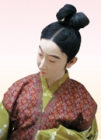Japanese Gallery (Honkan) Room 16
February 19, 2008 (Tue) - March 30, 2008 (Sun)
First established in 1872, the museum has been through several name changes. It was first simply called the Museum and had a wide-ranging collection covering history, art, natural history, and industry as well as a library. In 1873, a department called the Historical Investigation Department was created which was to take charge of the research, display, and preservation of national artifacts, promote traditional culture through historical and art objects, and manage the library with its vast collection of Japanese and Chinese books. In 1876 the museum was reorganized and the work of this department was taken over by a newly created Historiography Department. Together with the Art Department, this formed the nucleus of the museum and was in charge of researching and compiling catalogues of historical objects, such as documents, archaeological objects, ritual implements, coins, arms and costumes.
In 1889, when ownership of the museum changed to the Imperial Household, the name was changed to the Imperial Museum and the Historiography Department was merged with the Library Department to become the Historical Department. This took charge of the collection, its display and preservation, as well as the compilation and publication of objects showing the development of Japanese history. The reorganization was based on a plan by the museum director, Kuki Ryuichi, to make the museum into a specialist history and art museum. The plan included proposals for dividing the duties of departments, the collection, classification and display of objects, as well as book publications and lectures. However, in 1938, when the present Main Gallery (Honkan) opened, the museum was reorganized again and the Historical Department was abolished, leaving all the objects under its custody to be incorporated into an "old art" category. A curator from the time wrote that such a classification ignored the traditional value of the objects.
This display highlights the museum's policies of collection, classification and display, through materials related to the changing role of the Historical Department.

